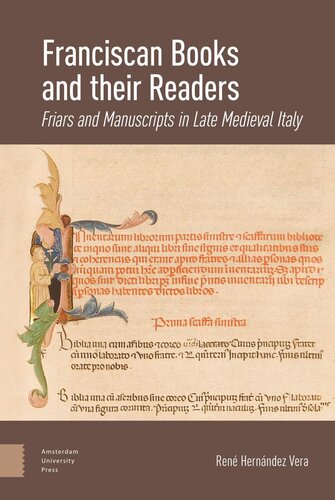

Most ebook files are in PDF format, so you can easily read them using various software such as Foxit Reader or directly on the Google Chrome browser.
Some ebook files are released by publishers in other formats such as .awz, .mobi, .epub, .fb2, etc. You may need to install specific software to read these formats on mobile/PC, such as Calibre.
Please read the tutorial at this link: https://ebookbell.com/faq
We offer FREE conversion to the popular formats you request; however, this may take some time. Therefore, right after payment, please email us, and we will try to provide the service as quickly as possible.
For some exceptional file formats or broken links (if any), please refrain from opening any disputes. Instead, email us first, and we will try to assist within a maximum of 6 hours.
EbookBell Team

5.0
68 reviewsThe book explores the manuscripts written, read, and studied by Franciscan friars from the thirteenth to the fifteenth centuries in Northern Italy, and specifically Padua, assessing four key aspects: ideal, space, form and readership. The ideal is studied through the regulations that determined what manuscripts should aim for. Space refers to the development and role of Franciscan libraries. The form is revealed by the assessment of the physical configuration of a set of representative manuscripts read, written, and manufactured by the friars. Finally, the study of the readership shows how Franciscans were skilled readers who employed certain forms of the manuscript as a portable, personal library, and as a tool for learning and pastoral care. By comparing the book collections of Padua’s reformed and unreformed medieval Franciscan libraries for the first time, this study reveals new features of the ground-breaking cultural agency of medieval friars.